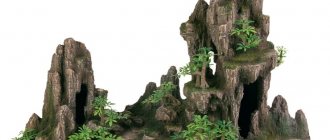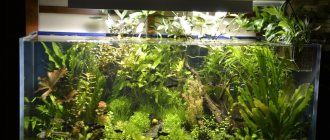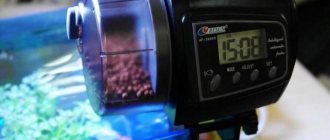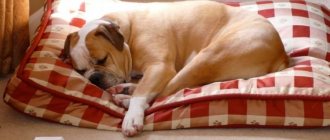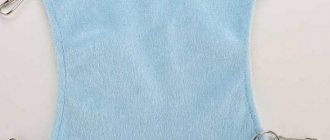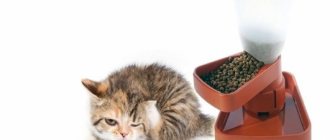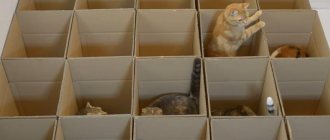First of all, you need to decide which trees can be used to make driftwood for an aquarium. The answer is simple: any deciduous trees, which grow in abundance in temperate latitudes. Conifers are not suitable due to the resins they contain. Excellent driftwood is obtained from both wild (birch, oak, hazel, etc.) and fruit (cherry, apple, etc.) trees.
You can use all parts of the tree from roots to branches. It is believed that roots are more preferable because they have a complex shape than branches. Accordingly, they look more beautiful, although this is very subjective.
Choosing a tree for driftwood in an aquarium
Separation of fragments (future snags) from a fallen tree and loading into a car.
In the nearest forest or not far from your dacha, you can find broken or fallen trees with torn out roots. And in reservoirs there will probably be driftwood - a once drowned tree or bush. Using an ax or saw, separate the piece you like. It is not necessary to adjust it to the size of the aquarium on site. Doing this at home will be much more comfortable.
Where not to collect driftwood for an aquarium
Near large industrial facilities, highways and other busy roads, within the city. The explanation suggests itself - in such places, trees accumulate various pollutants that potentially pose a threat to the inhabitants of the aquarium.
Second phase. Processing and disinfection of driftwood
How to secure it to the bottom?
Soaking will cause the tree to become saturated with enough water to begin to sink, even if it takes longer. If you don’t want to wait that long, then you can deliberately try to drown her. It will also absorb water at the bottom, we’ll just help. How to drown:
- Glue it on silicone or secure it with screws. In the case of screws, they must be made of stainless steel; they can be attached to a treated board, plexiglass or stone and placed on the bottom. If you use glue, remember that it can be harmful to the fish. Don't forget to choose fish-safe silicone.
- We attach a weighting agent, clamp the branches with stones, secure it with fishing line or use suction cups (it is not recommended to use suction cups, because sooner or later they will come off).
You can use any of the methods. But an important clarification: you need to install the driftwood so that the branches do not rest against the walls of the aquarium, because in water it begins to swell and the branches begin to press on the glass.
After preparing and processing the wood, the next problem arises. The snag does not want to stay at the bottom and constantly floats up.
- Drill the wood into the ground. This option is not suitable for pieces that are too large. There is also always the possibility that bottom-dwelling fish can undermine passages in the ground, which will lead to further floating of snags.
- Secure the tree to a solid base: stones or a plexiglass stand. Only stainless steel hardware is used, all sharp edges of which are treated with special silicone or paraffin, safe for the inhabitants of the aquarium.
- Using suction cups. The option is also not always reliable, because any suction cup can come loose over time.
Making a unique landscape for your aquarium is not so difficult. The most proven way is to decorate with stones and driftwood, as well as purchased decor. You can find many suitable elements on sale, but the cost of finished driftwood is usually quite high. That is why many aquarists prefer to select and process the wood themselves. Our information will tell you which wood is better, as well as how to process driftwood for an aquarium.
We suggest you read: How much does a deer weigh?
Untreated driftwood for aquarium
Untreated driftwood and fragments of wood lie on the tiled floor.
When the driftwood is delivered home and cut into the required pieces, or excess branches are removed, it must be processed and disinfected to remove contaminants and get rid of various microorganisms. In addition, the processing process solves another problem - the buoyancy of wood.
Cleaning driftwood for an aquarium
The driftwood is cleaned with a brush from dirt and bark under running water.
Place the driftwood in a container with water so that it covers it completely, and leave for a couple of days. You will probably need a small weight to keep the snag from floating. Then it is taken out and cleaned of bark and dirt under running water using a brush with stiff bristles or scraped out with a knife. The next step is disinfection.
Selecting and properly preparing driftwood: stages
Naturally, you shouldn’t put any stick into the aquarium, because the aquarium has its own biosystem, which was artificially created by fish and plants, and we can accidentally destroy it.
- The first way is to buy driftwood at a pet store. When purchasing, make sure that it is specifically for fish, since reptiles are often treated with a special chemical that can be toxic to aquatic life. The most common species found in the pet store are mangrove driftwood, ironwood, and mopani. But they color the water quite strongly, and getting rid of the paint is not so easy.
- The second way is to do it yourself. This is very easy to do: find the driftwood yourself! You can get out into the forest or go to a pond/lake and search there. There are often disputes about which tree roots or branches are suitable. In fact, both deciduous trees and conifers are suitable. But the latter will have to be processed longer before being placed in the aquarium, since they contain more resins.
Often they use branches that are already flooded in reservoirs (but there is a certain risk here, since the tree was there for a long time under different conditions). Suitable driftwood for an aquarium is made from an apple tree, natural driftwood from a grapevine, aspen, poplar, willow, pear, fruit trees, oak, and willow. The last two are considered more durable, because not everyone is ready to change driftwood every few years, and they need more careful processing.
Also check to see if the wood is rotten. There should be no rot or mold on the wood. Putrid areas, dirt and bark residues must be removed (if it is not possible to remove the bark at this stage, this can be done after treatment). The branches or roots must be dry; you can dry them in the sun.
Careful selection
No sane person would put the first stick he came across on a walk into his aquarium. This is fraught with the destruction of the eco-balance and the death of all living things. Choosing driftwood is one of the key stages, if not the most important, and a number of conditions must be taken into account.
You can buy driftwood at a pet store. This is the easiest, but sometimes requiring considerable financial expenditure, method. The most commonly sold driftwood is foreign wood species: mangrove, mopani.
However, such driftwood greatly shades the water, sometimes giving it the color of rich tea leaves. During transportation, they attract a lot of harmful substances to fish, so even purchased snags will need to be processed and soaked to eliminate these problems.
And if you are not a wood connoisseur, be careful: unscrupulous sellers may offer you ordinary local wood under the guise of an overseas wood, especially at poultry markets.
Therefore, it is safer and cheaper to make such useful decor yourself.
Recessed branches and roots of hard deciduous trees that have lain in water for a long time are ideal for an aquarium: willow, apple, and pear trees. It is strictly not recommended to use coniferous species - spruce, pine, juniper.
The specimen you like should be carefully examined: too rotten and rotten driftwood, which simply crumbles from the slightest pressure, is not suitable.
The wood should be hard, preferably with grooves from beetles and worms - they destroy biological components that can harm the fish. Living branches cannot be used.
From a suitable piece of driftwood, you must immediately remove all rotten parts, moss, algae and bark.
At home, the driftwood needs to be thoroughly cleaned, the remaining bark must be removed so that it remains completely bare. No matter how beautiful the bark itself looks, it will certainly begin to rot in the aquarium, and the fish may be injured by floating pieces.
Then wash the driftwood under running water and place it in a strong salt solution for some time (30-60 minutes). Salt is poured in until it stops dissolving. You will then cook it in this solution.
Boil driftwood over low heat in enamel or stainless steel containers (aluminum is not suitable) for several hours. The minimum period is considered to be 4 hours, but in this case more is better than less.
The duration also depends on the thickness and size of the driftwood: some simply do not fit into the pan, so they have to be turned over every few hours to cook all areas; thick ones a priori need to be cooked longer. During cooking, add water as needed as it will evaporate.
For additional disinfection, you can add a little potassium permanganate; it will also give the wood a noble dark color.
After boiling, the driftwood is left under running (from the tap) water or placed in a basin or bathtub with frequent water changes for another week. This is done to remove any remaining salt that the driftwood managed to absorb during cooking. In addition, this way the driftwood becomes saturated with liquid and in most cases begins to sink.
Before diving into the aquarium, be sure to check if it floats to the surface. After this, the driftwood is thoroughly dried and again checked for buoyancy. Some specimens still retain a stubborn ability to float. In this case, the driftwood will have to be fixed to the bottom of the aquarium.
Also pay attention to the degree of coloration of the water: a slight brownish tint will most likely go away within a few days or water changes in the aquarium. Strongly staining driftwood must be soaked again until it no longer tints the water.
Even after careful processing, there is a risk that rotten or living areas remain inside the driftwood, which may begin to rot already in the aquarium. Therefore, experienced aquarists use 2 methods.
1. Firing. The driftwood is lightly burned with a blowtorch either over the entire surface or only at suspicious ends, then placed in water for 2-3 days, periodically wiping the charred areas with a napkin and removing soot.
2. Paraffin. For absolute safety, some people pour a thin layer of molten paraffin over the entire area of the driftwood. This is undoubtedly the most reliable way to prevent any unwanted components from escaping from the wood into the aquarium water.
The easiest way is if the snag stops floating. Then you can simply lay it on the bottom and secure it with soil. But often the snag does not want to lie still and rises to the surface of the water. This can be dangerous for the inhabitants of the aquarium.
There are several options to tame the rebellious one:
- Fishing line. You can tie a fishing line to a snag, and either press the other end into the ground with a stone, or tie a weight to it.
- Sucker. The option is easy, but unreliable. Over time, any sucker will fall off the surface. Some go to extremes and glue the suction cup or the snag itself directly to the glass with glue: doing this is extremely dangerous for the health of the fish - chemicals remain chemicals.
- Stainless steel screws. The method is reliable, especially if you make a base for the driftwood from a treated piece of board, plexiglass, stone and secure it with soil. But what is important here is how well the quality of the nails or screws corresponds to their name and whether they will not rust. If you are not sure, you can fill the attachment points with special silicone that is safe for fish.
- Cargo. In large driftwood, cavities are drilled, filled with silicone or various screws are placed in them.
We suggest you familiarize yourself with: Unpretentious plants in an aquarium
Whatever method you choose, remember that you should never fasten driftwood against the walls of the aquarium - it will swell over time and can squeeze out or break the glass.
If desired, you can grow different types of moss and plants on an established snag, which will give your home pond the appearance of a real corner of the wild.
I wish you design inspiration, and always remember about the safety of your choice for your aquarium pets!
Methods for disinfecting driftwood
Method No. 1. Treatment with active chlorine
The principle of operation is the same as the treatment of tap water. The already cleaned driftwood is again placed in the container, but this time chlorinated water is poured in. As bleach I use the usual 4% Whiteness in a ratio of 1.5 ml. for 20 liters. The procedure lasts three to four days.
Method No. 2. Salt treatment
In high concentrations, salt is lethal to many organisms, especially from freshwater bodies. The cleaned driftwood is immersed in a container with salt water. The minimum concentration of salt is four teaspoons per 1 liter of water. The procedure lasts about a week.
Method number 3. Boiling
Boiling driftwood for an aquarium
Disinfecting driftwood for an aquarium by boiling it in a saucepan on a gas stove.
The best option if the driftwood is small and you don’t mind having a pan. You can boil for 15–30 minutes. Next, the snag is left to cool in the same water.
When the driftwood is cleaned and disinfected, the longest process begins - getting rid of buoyancy. As you know, wood does not sink. However, when left in water for a long time, the wood fibers swell and it begins to sink. Depending on the size and type of tree, this process can take up to a month. The driftwood is placed in water and waited for it to sink. In this case, the water should be updated with new water daily.
What types of fish require snags?
Of course, it will be more fun for any fish, and it will be more interesting for the owner to watch their pets if the driftwood becomes part of the interior of the aquarium. But there are certain types of fish that simply need snags.
Thus, various types of catfish use the plaque formed on the surface of driftwood as additional food, and the thinnest upper layers of wood as a source of dietary fiber. These are fish such as panak, Orinoco catfish, ancistrus catfish, and cuckoo catfish.
Many fish, which in natural conditions prefer to spawn in the roots of trees that have fallen into the water, or old snags, are happy to do the same in an artificial environment. This is a large group of fish from the characin, labyrinth and glass perch families.
Long and narrow eel-like fish will also be grateful to you for a labyrinth of roots or small spreading snags and for reliable shelter.
You should be especially careful when choosing the size of snags if you keep very active or aggressive fish (some species of African cichlids, for example), since such pets prefer rocky, stone reservoirs and can harm themselves by injuring themselves during vigorous movement and fights on protruding edges.
But here it is enough to follow a simple rule: there should be few snags, they should not occupy a large space and have sharp protrusions. It is better if it is one large, uncomplicated and smooth piece of a large branch, without shoots.
Soaking driftwood for an aquarium
The cleaned and disinfected driftwood is immersed in a container of water.
During this time, the remaining chlorine evaporates from the driftwood if a similar disinfection method was used. Organic tannins such as tannins, which color the water brownish, are also washed out. For example, oak contains a lot of tannins.
Clean and safe driftwood can be placed in the aquarium.

